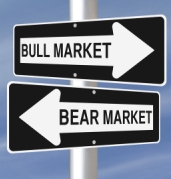Managed Market risk- oxymoron? No!
Three dozen free tutorials are found in Trading Tips, along with easy to learn methods that we sell reasonably in our product section.
Learn with our products
When you become aware of market risk, you will see the value of caution and control, features that can be learned!
We call that,
Managed Market Risk.
I was asked by a participant in an investing class if the statistics were as bad as reported, that is, regarding winners and losers among investors and traders in the market. The follow-up question was very pointed, “What are we going to do differently to be among the few success stories?” The short answer to the question is we learn to manage market risk. The long answer is longer than we can handle in one post. Let’s begin with risk philosophy and what risk management means, then follow-up in later blogs with techniques and examples.
The word “risk” comes from the early Italian “risicare,” which means “to dare.” The idea that we might “dare” to take action may be something we would “do on a dare.” That is, without rational thought, having a cavalier disregard for the consequences. Some would call it “guts!”
If that is our approach to market risk, we are all in deep trouble. The importance of the definition above is that risk, meaning “to dare,” is a choice we make. It is not something left to the roll of the dice, to luck, or to the whims of fate. Learn how to Manage Market Risk.
True progress in society began as soon as this understanding of risk was accepted. That is, when people realized they had some control over their destiny, they were no longer at the mercy of mediums and soothsayers for a peek into the future. Once risk could be managed, the very idea of effecting change brought an excitement and an energy that is still driving the economies of the world. It is our understanding of risk that allows us to make rational decisions about our future.
Because our understandings are always incomplete, there must ever be an element of risk in what we hope and plan for the future. Certainty is in the past, in what has happened. When we attach “certainty” to the future, we always end up with egg on our face. That possibility serves to dampen our enthusiasm for taking a chance. However, it is a tribute to human nature to feel compelled to take chances. It is this “irrational” nature that has led the industrial revolution, the space age, the computer, the web and cyber-revolutions and who knows what in the future.

The entrepreneurial spirit was born with the prospects of wealth that risk-management offered. Wealth has always been a powerful motivator and the extent of what we now see as global trade has been the outgrowth. Capitalism flourished in this environment with risk-taking providing its foundation. Few people gain wealth without taking a chance or coming face-to-face with market risk.
That brings us to the market place today, where we find a laboratory for exercising the principles of risk. What a great dynamic we can take part in. It is in the laboratory that systems of market risk management have flourished and fallen. The good is always accompanied by the bad. So, let’s examine how managed market risk relates in the stock marketplace…
Managed Market risk has long been linked to the volatility of a stock. Or, it is more risky to invest in a stock that moves up and down more dramatically, even while moving steadily higher with an increasing market. The technical indicator “beta” compares a stock’s volatility to that of the S&P 500 which is considered “The Market!” A beta of one means it moves exactly as the S&P, higher than one means it moves more dramatically, less then one less dramatically, and if it is n egative, it moves in an opposite direction from the S&P. In this context, a low risk stock would be one with a low beta.
In recent years the overall volatility of the market has increased significantly, where very large jumps both up and down occur routinely. The idea of beta representing market risk does not carry the weight it once did. In our book, “Provident Investing,” we discuss seven additional risks we must consider when making investment decisions: 1. Market Risk, 2. Interest rate risk, 3. Opportunity risk, 4. Cyclical risk, 5. Inflation risk, 6. Liquidity risk, and 7. Diversification risk. Each of these risks represent events that can occur over which we have no control.
How comfortable we all are when every thing is under control! It’s the oft repeated story of the sailor who can sleep when the wind blows. He has taken the necessary precautions, tying down everything that might blow away in a possible storm. Having done that, the potential risk is minimized. He is unable to control the storm but can sleep through the event because of preventive steps taken. He has managed the risk!
Let’s see in coming blogs how we can manage the several Market Risks identified as we invest and trade. Managed Market Risks will include the important tool called ‘stops’.
“You can’t fly a kite unless you go against the wind and have a weight to keep it from turning somersaults. The same with man. No man will succeed unless unless he is ready to face and overcome difficulties and is prepared to assume responsibilities.” William J.H. Boetcker
In a word – INSIGHT!
